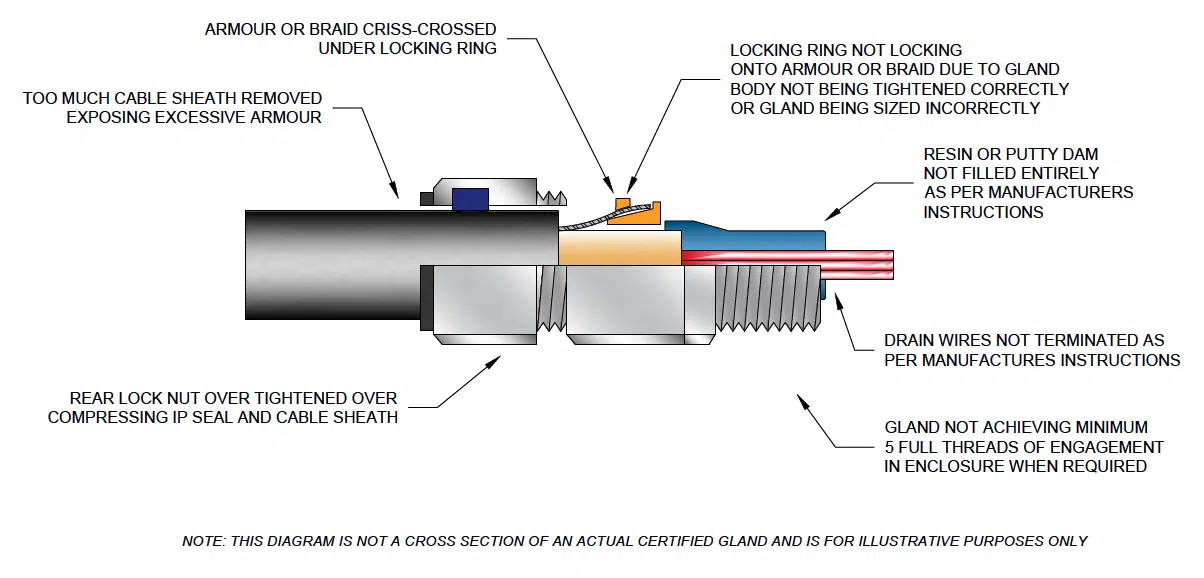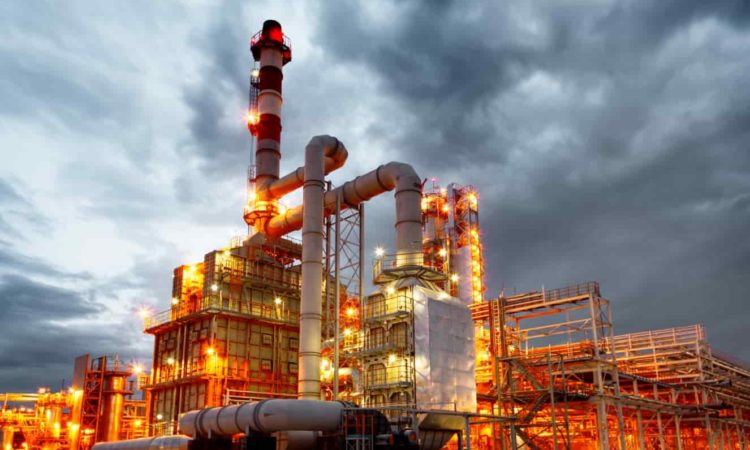Top Guidelines Of Roar Solutions
Top Guidelines Of Roar Solutions
Blog Article
Indicators on Roar Solutions You Need To Know
Table of ContentsRumored Buzz on Roar SolutionsThe Buzz on Roar SolutionsThe Only Guide for Roar Solutions
In order to shield installments from a prospective explosion an approach of analysing and classifying a possibly unsafe area is called for. The function of this is to ensure the right choice and installation of tools to ultimately prevent a surge and to guarantee security of life.
(https://www.brownbook.net/business/53579326/roar-solutions/)
No equipment ought to be set up where the surface temperature of the devices is above the ignition temperature level of the offered threat. Below are some common dust hazardous and their minimal ignition temperature level. Coal Dirt 380C 225C Polythene 420C (melts) Methyl Cellulose 420C 320C Starch 460C 435C Flour 490C 340C Sugar 490C 460C Grain Dust 510C 300C Phenolic Resin 530C > 450C Aluminium 590C > 450C PVC 700C > 450C Soot 810C 570C The possibility of the hazard being present in a focus high adequate to create an ignition will certainly differ from place to place.
In order to identify this risk a setup is split into areas of threat relying on the quantity of time the dangerous is present. These locations are described as Areas. For gases and vapours and dusts and fibers there are 3 areas. Zone 0 Area 20 A dangerous environment is highly likely to be existing and might exist for lengthy durations of time (> 1000 hours per year) or perhaps continually Area 1 Area 21 A hazardous environment is feasible yet not likely to be present for lengthy periods of time (> 10 450 C [842 F] A category of T6 suggests the minimum ignition temperature is > 85 C [185 F] Hazardous area electric tools possibly designed for use in higher ambient temperature levels. This would certainly suggested on the rating plate e.g. EExe II C T3 Ta + 60C( This indicates at 60C ambient T3 will certainly not be exceeded) T1 T1, T2, T3, T4, T5, T6 T2 T2, T3, T4, T5, T6 T3 T3, T4, T5, T6 T4 T4, T5, T6 T5 T5, T6 T6 T6 A T Course ranking of T1 implies the optimum surface area temperature generated by the instrument at 40 C is 450 C. Assuming the linked T Class and Temperature rating for the devices are suitable for the area, you can always utilize an instrument with a much more rigid Division ranking than needed for the location. There isn't a clear answer to this concern. It truly does depend on the sort of equipment and what repair work require to be executed. Devices with particular test treatments that can't be executed in the field in order to achieve/maintain 3rd event score. Should come back to the factory if it is prior to the equipment's service. Area Repair Service By Authorised Personnel: Difficult screening may not be required nevertheless specific procedures might require to be complied with in order for the devices to keep its 3rd party score. Authorised workers have to be employed to perform the work properly Repair service have to be a like for like substitute. New part have to be considered as a direct replacement requiring no special testing of the equipment after the repair work is total. Each piece of devices with an unsafe ranking need to be evaluated independently. These are described at a high level listed below, however, for even more thorough info, please refer straight to the guidelines.
The Ultimate Guide To Roar Solutions
The devices register is a detailed database of equipment documents that consists of a minimum set of areas to recognize each item's area, technical criteria, Ex lover classification, age, and ecological data. This details is crucial for tracking and managing the equipment efficiently within harmful areas. On the other hand, for routine or RBI sampling assessments, the quality will certainly be a mix of In-depth and Close inspections. The proportion of In-depth to Shut inspections will certainly be identified by the Equipment Danger, which is evaluated based on ignition threat (the probability of a source of ignition versus the chance of a flammable environment )and the unsafe area category
( Area 0, 1, or 2). This variant will likewise affect the resourcing requirements for work prep work. Once Lots are specified, you can establish tasting strategies based upon the example size of each Whole lot, which describes the variety of arbitrary equipment things to be inspected. To figure out the called for sample dimension, 2 elements need to be examined: the dimension of the Whole lot and the classification of evaluation, which suggests the level of initiative that ought to be used( lowered, normal, or increased )to the evaluation of the Great deal. By integrating the classification of assessment with the Great deal size, you can after that develop the proper denial requirements for an example, suggesting the allowed variety of malfunctioning products discovered within that example. For more details on this procedure, please describe the Energy Institute Guidelines. The IEC 60079 standard advises that the optimum period in between examinations ought to not exceed three years. EEHA evaluations will certainly also be carried out beyond RBI projects as component of set up maintenance and devices overhauls or fixings. These inspections can be attributed towards the RBI sample sizes within the impacted Whole lots. EEHA examinations are carried out to determine faults in electrical devices. A weighted scoring system is essential, as a solitary item of equipment may have numerous mistakes, each with differing degrees of ignition danger. If the consolidated rating of both evaluations is much less than twice the mistake score, the Great deal is regarded appropriate. If the Lot is still thought about inappropriate, it needs to go through a complete examination or justification, which might activate stricter evaluation protocols. Accepted Lot: The reasons of any kind of mistakes are determined. If a typical failing mode is found, extra equipment may require assessment and repair. Faults are categorized by intensity( Security, Stability, Housekeeping ), making certain that urgent concerns are examined and resolved without delay to minimize any type of influence on safety and security or operations. The EEHA data source need to track and tape the lifecycle of faults along with the restorative activities taken. Carrying out a robust Risk-Based Evaluation( RBI )technique is critical for making sure compliance and security in taking care of Electrical Devices in Hazardous Locations( EEHA) (eeha courses). Automated Mistake Rating and Lifecycle Management: Effortlessly take care of faults and track their lifecycle to boost inspection precision. The introduction of this support for risk-based evaluation better strengthens Inspectivity's placement as a best-in-class option for regulatory compliance, along with for any type of asset-centric examination usage instance. If you have an interest in finding out much more, we invite you to request a demo and uncover just how our service can transform your EEHA administration processes.
Roar Solutions for Dummies

In regards to explosive danger, a harmful area is an atmosphere in which an eruptive atmosphere is existing (or might be expected to be existing) in quantities that call for special precautions for the building and construction, setup and use devices. electrical refresher course. In this short article we explore the difficulties faced in the office, the danger control actions, and the needed expertises to work securely
It is a repercussion of modern life that we produce, store or manage a variety of gases or fluids that are regarded flammable, and an array of dusts that are considered flammable. These substances can, in specific problems, form explosive ambiences and these can have major and heartbreaking consequences. The majority of us know with the fire triangle eliminate any type of among the three aspects and the fire can not take place, but what does this mean in the context of dangerous locations? When breaking this down into its most basic terms it is basically: a mix of a specific quantity of launch or leak of a certain material or product, mixing with ambient oxygen, and the visibility of a source of ignition.
In many circumstances, we can do little concerning the degrees of oxygen in the air, yet we can have substantial influence on resources of ignition, for instance electric tools. Dangerous areas are recorded on the dangerous location category drawing and are determined on-site by the triangular "EX-SPOUSE" sign. Here, amongst various other essential details, areas are divided into three kinds depending upon the hazard, the possibility and duration that an eruptive atmosphere will exist; Zone 0 or 20 is regarded one of the most hazardous and Area 2 or 22 is considered the least.
Report this page